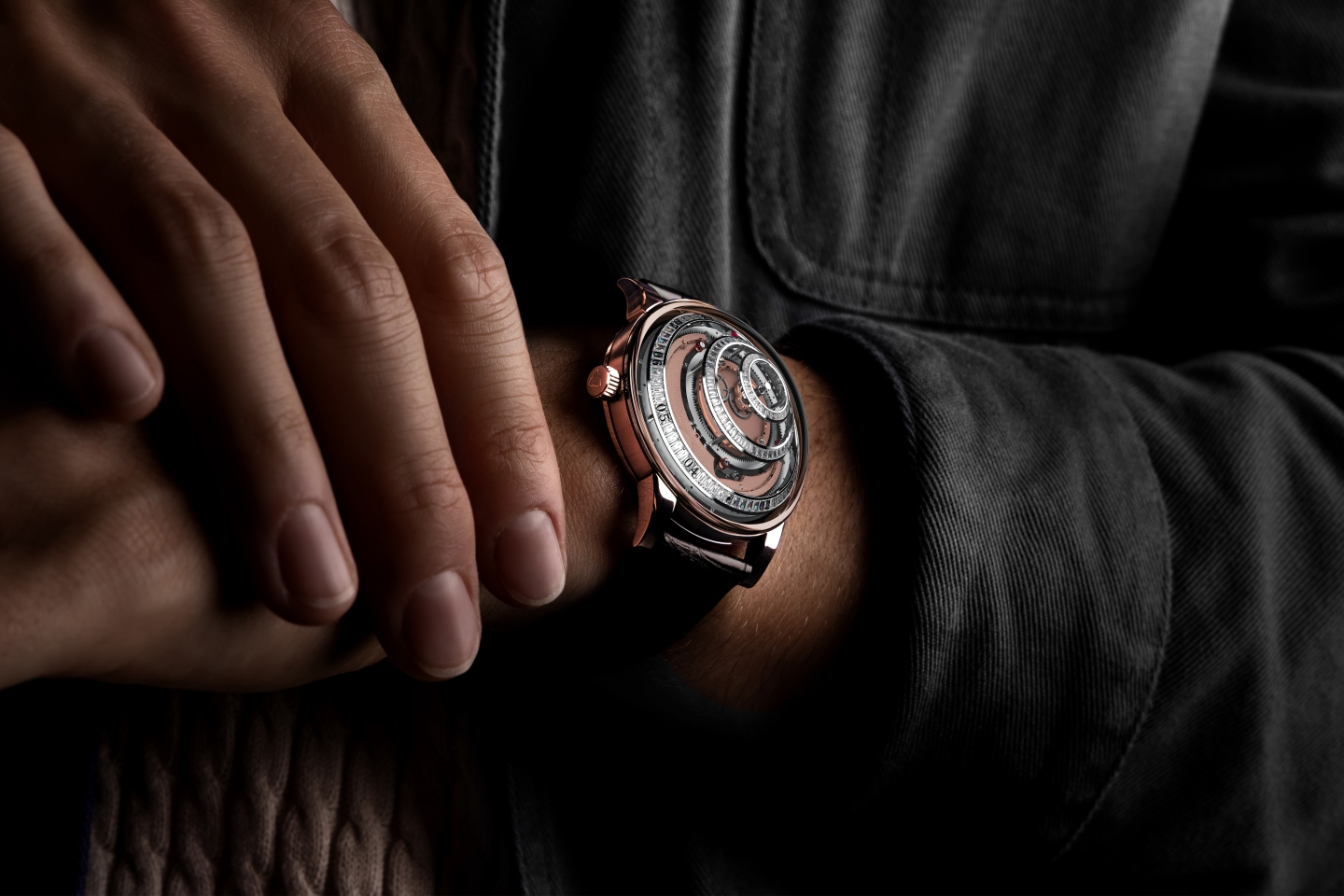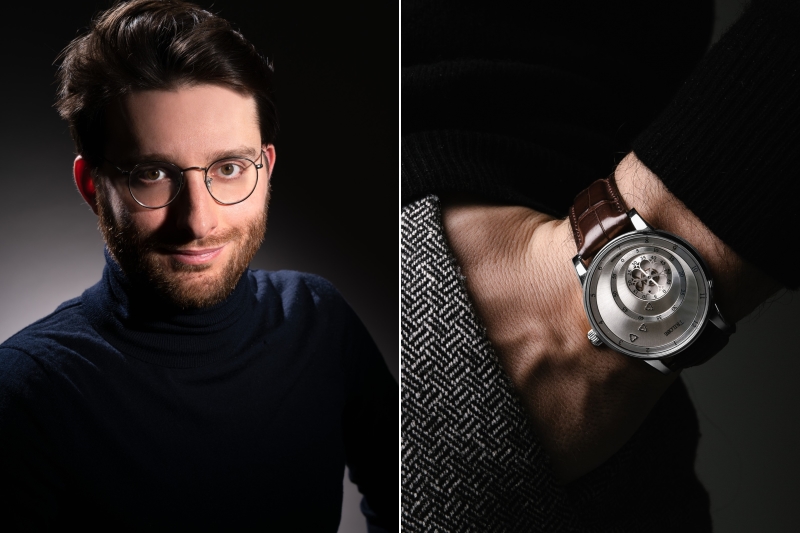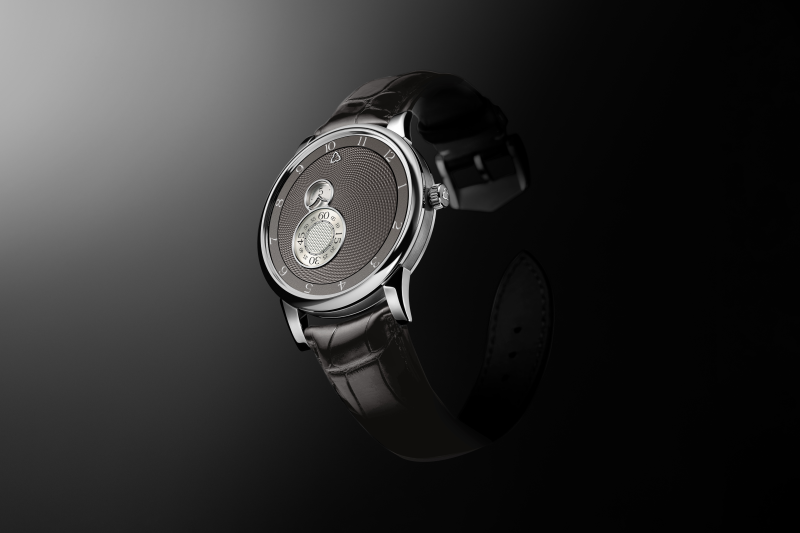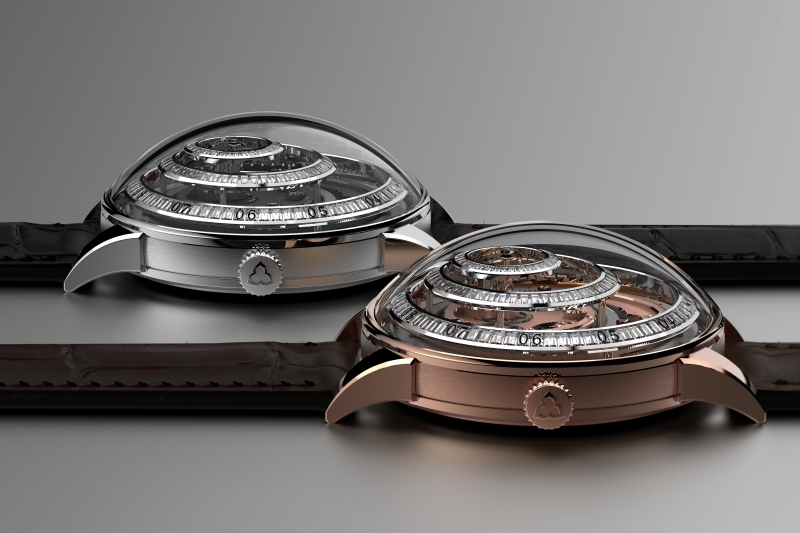
Une Folle Journée Diamant (All photos: Trilobe)
The path to watchmaking was an unforeseen adventure for Gautier Massonneau. A son of an architect and a designer, the young Frenchman started his career in financing infrastructure projects, travelling to places such as Japan and the Middle East for work. He began to develop an interest in watches along the way, but when it came down to selecting his first big-boy timepiece, he was stumped.
“At the beginning, I was looking for a watch that was extremely different, yet very classical, but I could not find something that met these two criteria,” he says. “There was one I loved, which was the Zeitwerk from A. Lange & Söhne, but that’s a bit expensive when you’re 24.”
But unlike any other 24-year-old who would, perhaps, very simply get another watch, Massonneau, now 32, threw a curveball and decided that he would DIY it himself.
It sounds a bit crazy, especially after admitting to boldly quitting his job to realise this unshakable idea he had of reading time differently. Six years he laboured over it and now Trilobe serves as a testament to the adage that nothing is impossible.
“It took more time than expected, of course, but that’s how the project was born. And it gave birth to the first collection, Les Matinaux, then came the Nuit Fantastique and the Une Folle Journée,” he says.
trilobe.jpg

One defining feature of Massonneau’s timepieces is the absence of hands. We have been reading time the same way for centuries. The system works because information can be read instantaneously at a glance. But Trilobe was born out of a desire to explore the anti-utilitarian. It seeks to imbue beauty and poetry into time-reading, even if it takes a moment longer. After all, isn’t time supposed to be a rare luxury?
Right off the bat, the Les Matinaux (translated to “the morning”) collection, named after French poet René Char’s poetry book and dubbed the “dawn breakers” of Trilobe, established a very unique visual identity for the brand — a factor Massonneau prioritised.
Three circles ring around the dial, one each for the hours, minutes and seconds, turning counterclockwise to again go against the grain of tradition. A flower lattice, or Sainte-Chapelle rose window, covers the seconds disc, subtly revealing the intricate movements of the gear train.
The series has evolved since, in sizing and colour, but Nuit Fantastique, which means “fantastic night”, sees a different configuration. Similarly, time is read from the outside in. The peripheral ring tells the hours, while the 11 o’clock aperture tells the minutes and the seconds animate on another ring at 8 o’clock. The latest edition, Nuit Fantastique Brume, sees the negative space decorated with a mesmerising Grain d’Orge guilloché or “Barley Grain” pattern.
trilobe_-_nuit_fantastique_brume_-_beautyshot.png

A sub-series comes under these two, called Secret, where there is an option to feature the night sky from a specific date and location on the dial. It adds a layer of sentimentality to the watch, immortalising a precious memory onto a timepiece you would see every day.
“When you don’t have hands, you can really go into different directions, spaces and dimensions,” says Massonneau, and this could not be more true for the aptly named Une Folle Journée collection, which means “a crazy day”. Here, Les Matinaux looks like it is captured mid-explosion, where the rings levitate under a glass dome, showcasing the proprietary movement below.
Topping that is the ostentatious Une Folle Journée Diamant, inspired by the splendid Opera Garnier, where the rings are replaced by 150 baguette diamonds. It is Trilobe’s first high jewellery piece and employs a unique way of gem setting.
“You need something very light because the higher you levitate, the lighter you need to be to avoid a torque effect or a blending of the rings,” he says. “So we use an alloy of silicon, magnesium and aluminium, which is twice as light as titanium. But the only drawback is that it’s also super elastic. So when we’re setting it, we have to be extra careful. And it actually takes hours to set one diamond because if you go too fast or strong, all the other diamonds will pop out.” Moreover, the numerals are hand-painted directly on the stone by a miniaturist painter.
trilobe_-_une_folle_journee_-_diamant_-_rose_gold_1.jpg

Massonneau has come a long way in getting Trilobe up and running. His independent brand is everywhere now, from Watches & Wonders to Geneva Watch Days and the Grand Prix d’Horlogerie de Genève.
“What we love is art,” he says. “Its difference. Its culture. That is our heartbeat. We want to bring a different sort of poetry into watchmaking. There’s not only one way to read time. There are plenty of ways to do that. And once you start from a blank page with a new paradigm, the creative possibilities are truly endless.”
When asked about his plans, Massonneau surprises us with a vision that will span 30 years. “I’m only in my 30s, so I’m in no rush. But I’m building a house for the long run. My vision is to have a maison focusing on haute horlogerie and haute joaillerie that does classic as well as eccentric products that can touch different areas of the market.”
Trilobe has at least 10 to 15 years of products drawn up, he divulges. “They’re not necessarily all developed, but some are already working prototypes.” He hints that there will be a complication coming out next year. “It’s ready. It’s in the safe. We just have to take it out.”
We can hardly wait.
This article first appeared on Oct 30, 2023 in The Edge Malaysia.


